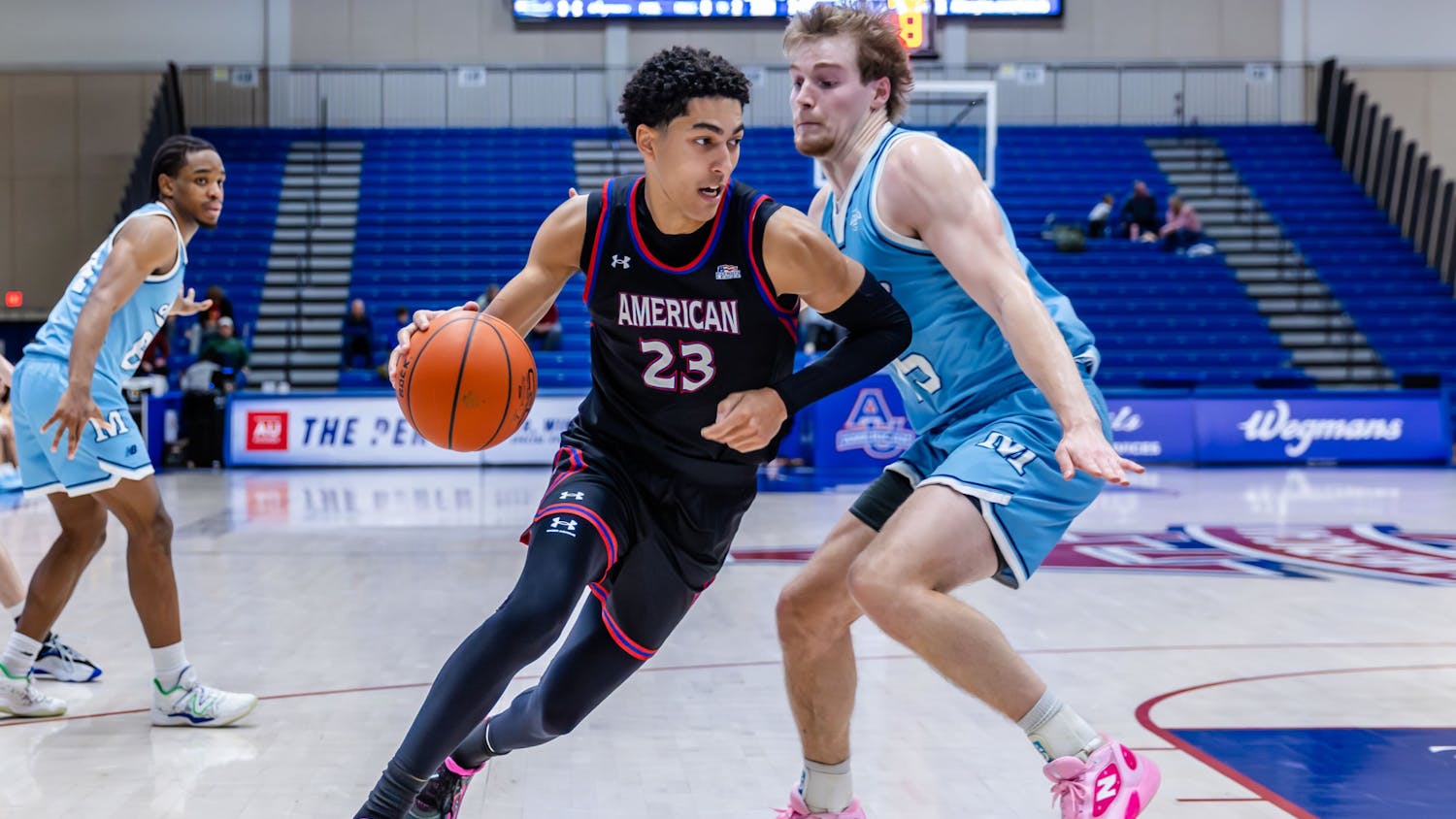One of these days, AU volleyball coach Barry Goldberg will tell you, his team is going to pull off the big win. It's all just a matter of keeping on doing what they're doing and sooner or later, they're bound to get a break.
That's what the Eagles (5-4) will be hoping for this weekend in San Diego in their last chance against powerhouse programs before the NCAA tournament in December. It's their first dates of the season with elite West Coast opponents as they try their luck against No. 18 San Diego (6-1) and No. 25 Long Beach State (5-2).
Such has been the program's standard operating procedure for years: play a non-conference schedule packed with top teams and use it to prepare for the post-season.
In recent seasons, AU has disposed of teams from major conferences, such as Duke and Kentucky. But the Eagles have yet to get the Big One - a victory over a ranked team or in the NCAA tournament.
"You've got to be a steadier team to knock off a team that's going to the NCAAs every year," Goldberg said. "We're not quite there yet, but we're taking the steps and in the next few weeks we're going to get to that place where we can bring it on with those kinds of teams."
Goldberg always assembles a squad with an even composure and willingness to work, but AU would have a right to be frustrated. It's 0-6 in the tournament, tied with Northwestern for most appearances without a win.
But the Eagles aren't alone in coming up short against the top teams. They're in a corner of the country that's been on the outside looking in. While the center of power in other sports has shifted, in volleyball, the best are in the west, just as it's been since the NCAA adopted the sport almost 25 years ago.
The Pacific coast is where the beach version of the sport became commercially successful. That, in hand with the broad support for youth volleyball clubs, has kept the game popular the region. The programs there can easily tap those resources as the rich stay rich.
"It's the recruits," San Diego coach Jennifer Petrie said. "If you can get an athlete and turn her into a volleyball player, that's great. But if you can get a volleyball player with a lot of club experience, it's even better."
The proof of this is in the postseason. There have been 24 national champions, and 17 of them have come from California. Even then the wealth isn't evenly shared: Stanford owns six of those 17 trophies.
The first school in the Eastern time zone to win it all was Penn State in 1999, but the hardware has gone right back westward every year since then.
Even in early rounds of the tournament, there's rarely the Cinderella team that drives basketball in March.
Only the top 16 teams are seeded in the NCAA tournament, so it's not always possible to determine a postseason upset purely by the numbers. But Temple came closest to being a tournament surprise in 2002. The unranked Owls, a perennial AU opponent, cut down No. 15 Penn State in the second round.
The upset the Eagles are looking for might be on par with Connecticut beating Texas in football. Both are great teams in th"eir region, but severely overmatched on the national scale.
But this doesn't mean that parity doesn't exist in volleyball, at least in the regular season. Petrie said the top 75 teams in the country play at high enough level and can beat each other on any given day.
This year's exhibit in that vein is Notre Dame, which was unranked before the season but has surged to No. 8 after an undefeated start and wins over Florida and Southern Cal.
But AU is on the cusp of that tier, although this could change with a few big wins.
One of AU's biggest troubles with marquee opponents is endurance. Junior outside hitter Elizabeth Maloney can hit as well as anyone. Middle blockers senior Cutrina Biddulph and sophomore Chelsa Brooks are just as strong along the net. But when play gets intense, the Eagles can be left behind.
"We have moments where we're back and forth, but overall those teams just keep wearing us out," Goldberg said. "They work hard and dig a lot of balls. They can play the longer rallies, and they keep moving. With the whole transition game, they're a step above us."
The players may get worn out, but they haven't let the annual struggle get to their heads. Instead they spin it to their advantage, just as they're supposed to.
"It's definitely frustrating," Biddulph said, "but it makes you that much more determined"



